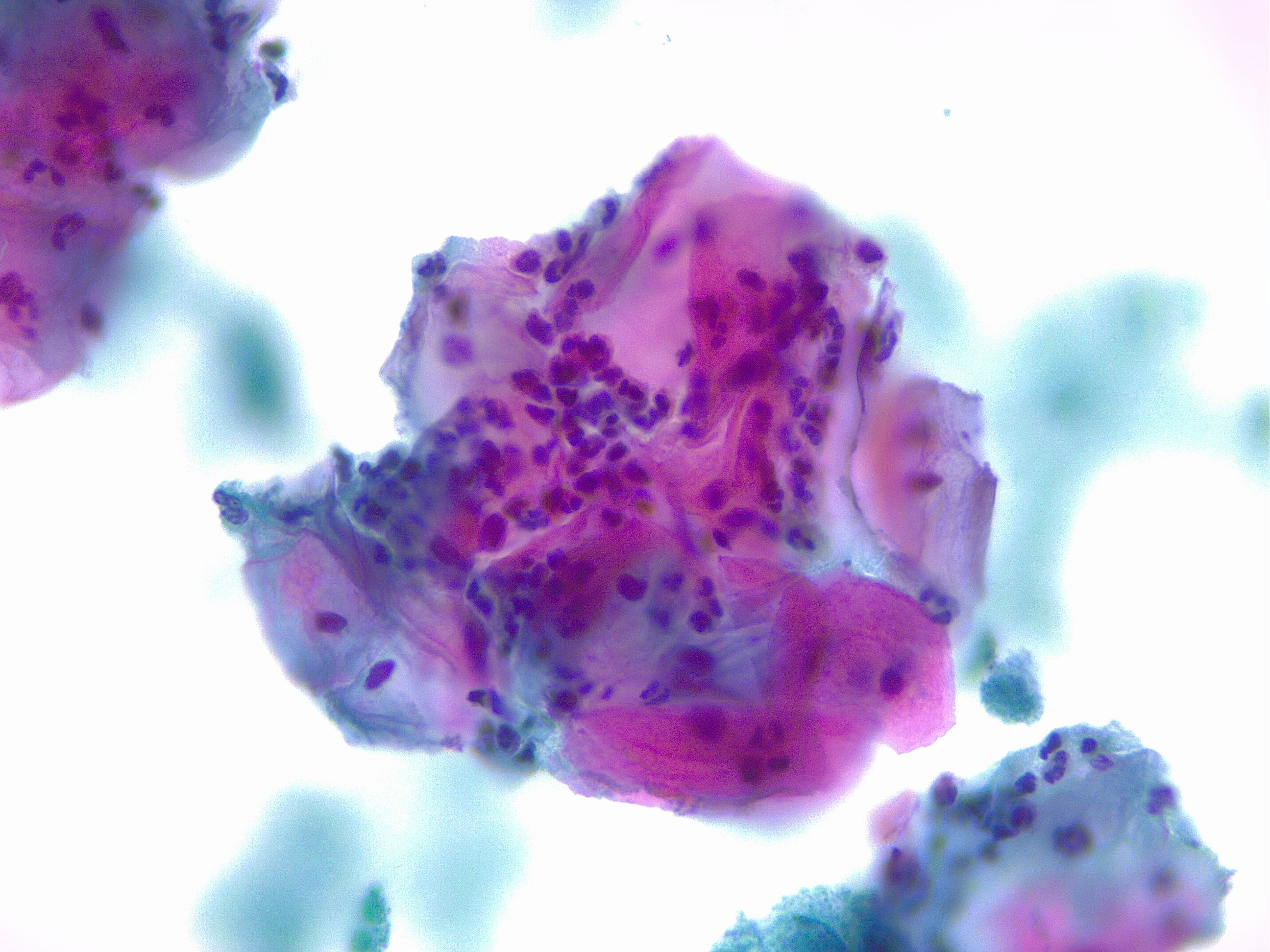[2]
Kurman RJ,Henson DE,Herbst AL,Noller KL,Schiffman MH, Interim guidelines for management of abnormal cervical cytology. The 1992 National Cancer Institute Workshop. JAMA. 1994 Jun 15;
[PubMed PMID: 8196145]
[4]
Sørbye SW,Suhrke P,Revå BW,Berland J,Maurseth RJ,Al-Shibli K, Accuracy of cervical cytology: comparison of diagnoses of 100 Pap smears read by four pathologists at three hospitals in Norway. BMC clinical pathology. 2017;
[PubMed PMID: 28860942]
[5]
Koonmee S,Bychkov A,Shuangshoti S,Bhummichitra K,Himakhun W,Karalak A,Rangdaeng S, False-Negative Rate of Papanicolaou Testing: A National Survey from the Thai Society of Cytology. Acta cytologica. 2017;
[PubMed PMID: 28738387]
Level 3 (low-level) evidence
[6]
Castillo M,Astudillo A,Clavero O,Velasco J,Ibáñez R,de Sanjosé S, Poor Cervical Cancer Screening Attendance and False Negatives. A Call for Organized Screening. PloS one. 2016;
[PubMed PMID: 27547971]
[7]
Wentzensen N,Arbyn M, HPV-based cervical cancer screening- facts, fiction, and misperceptions. Preventive medicine. 2017 May;
[PubMed PMID: 28279260]
[8]
Chatzistamatiou K,Moysiadis T,Vryzas D,Chatzaki E,Kaufmann AM,Koch I,Soutschek E,Boecher O,Tsertanidou A,Maglaveras N,Jansen-Duerr P,Agorastos T, Cigarette Smoking Promotes Infection of Cervical Cells by High-Risk Human Papillomaviruses, but not Subsequent E7 Oncoprotein Expression. International journal of molecular sciences. 2018 Jan 31;
[PubMed PMID: 29385075]
[9]
Roura E,Travier N,Waterboer T,de Sanjosé S,Bosch FX,Pawlita M,Pala V,Weiderpass E,Margall N,Dillner J,Gram IT,Tjønneland A,Munk C,Palli D,Khaw KT,Overvad K,Clavel-Chapelon F,Mesrine S,Fournier A,Fortner RT,Ose J,Steffen A,Trichopoulou A,Lagiou P,Orfanos P,Masala G,Tumino R,Sacerdote C,Polidoro S,Mattiello A,Lund E,Peeters PH,Bueno-de-Mesquita HB,Quirós JR,Sánchez MJ,Navarro C,Barricarte A,Larrañaga N,Ekström J,Lindquist D,Idahl A,Travis RC,Merritt MA,Gunter MJ,Rinaldi S,Tommasino M,Franceschi S,Riboli E,Castellsagué X, The Influence of Hormonal Factors on the Risk of Developing Cervical Cancer and Pre-Cancer: Results from the EPIC Cohort. PloS one. 2016;
[PubMed PMID: 26808155]
[10]
Marks M,Gravitt PE,Gupta SB,Liaw KL,Kim E,Tadesse A,Phongnarisorn C,Wootipoom V,Yuenyao P,Vipupinyo C,Rugpao S,Sriplienchan S,Celentano DD, The association of hormonal contraceptive use and HPV prevalence. International journal of cancer. 2011 Jun 15;
[PubMed PMID: 20734390]
[11]
Conlon JL, Diethylstilbestrol: Potential health risks for women exposed in utero and their offspring. JAAPA : official journal of the American Academy of Physician Assistants. 2017 Feb;
[PubMed PMID: 28098674]
[12]
Garrett LA,McCann CK, Abnormal cytology in 2012: management of atypical squamous cells, low-grade intraepithelial neoplasia, and high-grade intraepithelial neoplasia. Clinical obstetrics and gynecology. 2013 Mar;
[PubMed PMID: 23337842]
[13]
Ciavattini A,Clemente N,Tsiroglou D,Sopracordevole F,Serri M,Delli Carpini G,Papiccio M,Cattani P, Follow up in women with biopsy diagnosis of cervical low-grade squamous intraepithelial lesion (LSIL): how long should it be? Archives of gynecology and obstetrics. 2017 Apr;
[PubMed PMID: 28255767]
[15]
Katki HA,Schiffman M,Castle PE,Fetterman B,Poitras NE,Lorey T,Cheung LC,Raine-Bennett T,Gage JC,Kinney WK, Benchmarking CIN 3 risk as the basis for incorporating HPV and Pap cotesting into cervical screening and management guidelines. Journal of lower genital tract disease. 2013 Apr;
[PubMed PMID: 23519302]
[16]
Boyraz G,Basaran D,Salman MC,Ibrahimov A,Onder S,Akman O,Ozgul N,Yuce K, Histological Follow-Up in Patients with Atypical Glandular Cells on Pap Smears. Journal of cytology. 2017 Oct-Dec;
[PubMed PMID: 29118475]
[17]
Geier CS,Wilson M,Creasman W, Clinical evaluation of atypical glandular cells of undetermined significance. American journal of obstetrics and gynecology. 2001 Jan;
[PubMed PMID: 11174481]
[18]
Zhao C,Austin RM,Pan J,Barr N,Martin SE,Raza A,Cobb C, Clinical significance of atypical glandular cells in conventional pap smears in a large, high-risk U.S. west coast minority population. Acta cytologica. 2009 Mar-Apr;
[PubMed PMID: 19365967]
[19]
Wang SS,Sherman ME,Hildesheim A,Lacey JV Jr,Devesa S, Cervical adenocarcinoma and squamous cell carcinoma incidence trends among white women and black women in the United States for 1976-2000. Cancer. 2004 Mar 1;
[PubMed PMID: 14983500]
[20]
Takeuchi S, Biology and treatment of cervical adenocarcinoma. Chinese journal of cancer research = Chung-kuo yen cheng yen chiu. 2016 Apr;
[PubMed PMID: 27198186]
[21]
Ki EY,Byun SW,Park JS,Lee SJ,Hur SY, Adenoma malignum of the uterine cervix: report of four cases. World journal of surgical oncology. 2013 Jul 26;
[PubMed PMID: 23885647]
Level 3 (low-level) evidence
[22]
Chang J,Zhang S,Zhou H,Liang JX,Lin ZQ, [Clinical analysis of minimal deviation adenocarcinoma of the cervix: a report of five cases]. Ai zheng = Aizheng = Chinese journal of cancer. 2008 Dec;
[PubMed PMID: 19080000]
Level 3 (low-level) evidence
[23]
Balasubramaniam SD,Balakrishnan V,Oon CE,Kaur G, Key Molecular Events in Cervical Cancer Development. Medicina (Kaunas, Lithuania). 2019 Jul 17;
[PubMed PMID: 31319555]
[24]
Yao YL,Tian QF,Cheng B,Cheng YF,Ye J,Lu WG, Human papillomavirus (HPV) E6/E7 mRNA detection in cervical exfoliated cells: a potential triage for HPV-positive women. Journal of Zhejiang University. Science. B. 2017 Mar.;
[PubMed PMID: 28271661]
[25]
Dick FA,Rubin SM, Molecular mechanisms underlying RB protein function. Nature reviews. Molecular cell biology. 2013 May;
[PubMed PMID: 23594950]
[26]
Mylavarapu S,Das A,Roy M, Role of BRCA Mutations in the Modulation of Response to Platinum Therapy. Frontiers in oncology. 2018;
[PubMed PMID: 29459887]
[27]
Gibb RK,Martens MG, The impact of liquid-based cytology in decreasing the incidence of cervical cancer. Reviews in obstetrics
[PubMed PMID: 21617785]

